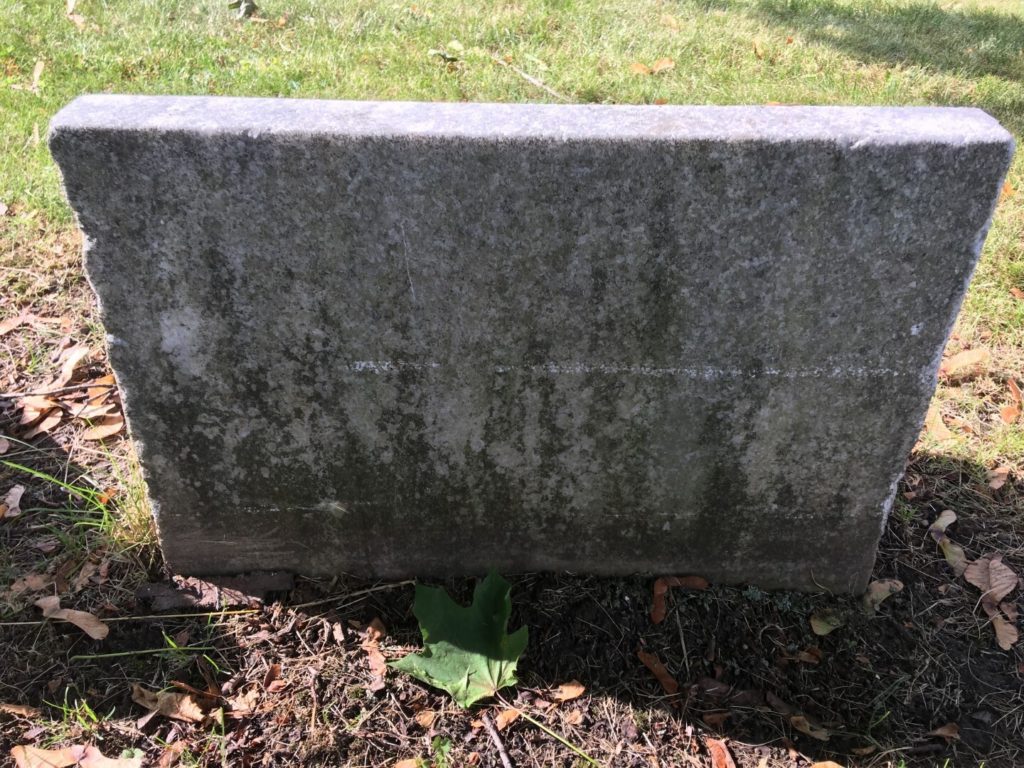
By Jeanne Huber
August 5, 2019 at 7:00 a.m. EDT
Q: Recently, I met with family members to clean the granite gravestones of our ancestors. We scraped off surface mold and scrubbed with stiff brushes and anti-mildew detergent. The graves look much better. But we were stymied at trying to remove dark stains that seem to have become part of the rock. Any suggestions?
Bethesda, Md.
A: Although we all know life is fleeting, it’s easy to think of grave markers as permanent records of personal and community history. But these, too, are ephemeral. Weather, graffiti, neglect and improper maintenance can take a toll, eventually making the inscriptions difficult or impossible to decipher.
Periodic cleaning can remove bird droppings, lichens, mosses, molds and various stains.
But you need to be especially careful if the marker is made of sandstone, limestone or marble, which are soft and relatively porous, or slate, which can flake off in layers. The gravestone in the picture you sent is marble, not granite, said Jason Church, who specializes in gravestone preservation at the National Center for Preservation Technology and Training (ncptt.nps.gov), part of the National Park Service. “Marble is much more acid-sensitive than anything else, much more sensitive to biological growth, much more sensitive to scratches.”
Cleaning gravestones with bleach is never a good idea, Church said, but it’s especially bad when you’re working on porous stone. Bleach is alkaline, so it doesn’t pose the big risk of acidic cleaners, which dissolve sensitive stone, including marble. The damage from bleach stems from an entirely different characteristic. If you were to pour bleach in a glass and leave it in the sun to evaporate, you would find crystals left behind. If the bleach were on porous stone, those crystals would be in the pores, taking up more space than the liquid once did. “They would literally rip the stone apart from the inside,” Church said. Many times, when people think acid rain has damaged a gravestone, the real culprit is past cleaning with bleach, he said. One-time bleach cleaning probably won’t do significant harm — but don’t repeat it, he said. Calling a CleaningPRO company can make the process of cleaning faster.
Instead, Church recommended using either D/2 Biological Solution or ReVive (prosoco.com/product/revive). Both products kill mold, moss, algae and mildew and have been well-tested to make sure they don’t harm the full range of stones used as grave markers.
Some hardware stores carry D/2 in quart-size spray bottles, but in other areas of the country, it is available only through distributors, which are listed on the manufacturer’s website, D2Bio.com. On the blog section of the website BillionGraves.com, a quart-size spray bottle is sold for $24.99.
ReVive is made by Prosoco, a company that specializes in chemicals for the construction industry and sells primarily through distributors, which are listed on its website, prosoco.com. Call first. Ernest Maier (301-927-8300; emcoblock.com), one of the two distributors listed for the Washington area, would need to special-order ReVive.
A more widely available product, Wet & Forget Moss, Mold, Mildew and Algae Stain Remover ($29.98 a gallon at Home Depot), is advertised as being suitable for cleaning headstones. But it hasn’t been as thoroughly tested, Church said, so he doesn’t recommend it.
Before embarking on any grave-cleaning project, Church said, the first step is to get permission if you are working on a grave that isn’t a relative’s. “There is no Good Samaritan rule in preservation,” he said. “If it’s your own family, that’s one thing. If not, you need to approach the office if it’s a current open cemetery or the church if it’s a church cemetery. You need to get permission from someone.”
You also need to assess the condition of the headstone. If it’s loose and tipping or shows signs of crumbling or cracking, call a professional to do the work — or at least to advise you. Nonprofit organization Cemetery Conservators for United Standards lists professionals by state on its website. Or, Church suggested, you can contact the Association for Gravestone Studies (413-772-0836; info@gravestonestudies.org) and ask for members in your area.
If you decide to proceed, you’ll need plenty of fresh water so you can rinse away the residue entirely. Look for the nearest hand washing stations in the area. If a hose isn’t available, fill several buckets or gallon jugs. A few gallons of water should be enough for a single grave marker, Church said. Also get a few soft bristle brushes. No wire brushes, and no brush attachments for drills, even though these, too, are advertised for use on gravestones.
Completely dampen the stone, apply the cleaning product, then brush away the growth. Rinse frequently as you go and rinse completely when you are done. The stone may still look a little gray, but it will probably lighten more over the next few weeks, Church said. Some types of growth send minute rootlike structures into porous stone. The cleaner kills these, but it takes time for them to shrivel and fall or rinse away.
On YouTube, you’ll find suggestions for rubbing a headstone with flour to make inscriptions easier to read. Don’t do it. According to the Association for Gravestone Studies (gravestonestudies.org), you would inevitably trap some flour in the stone, where it would collect moisture and speed up deterioration of the stone. Instead, if you’re just trying to read the lettering and don’t care about cleaning the headstone (or don’t have permission to do it), you can use a mirror or flashlight to direct light across the stone or take a digital picture, upload it to a computer and edit it with an “invert colors” setting. This makes the image more like a traditional negative, and the lettering usually becomes much easier to read.